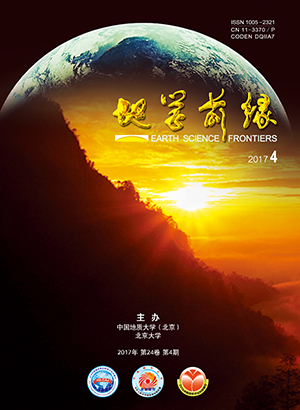|
|
Characteristics of uranium content and its geological and mineralization significance for the provenance areas, northern Northwest China
WANG Wenqing, LIU Chiyang, WANG Jianqiang, MA Huanhuan, GUAN Yuzhao
2019, 26(2):
292-303.
DOI: 10.13745/j.esf.sf.2018.9.1
The provenance areas of major basins in northern Northwest China, including the peripheral regions of the Yine, Beishan group, Santanghu, and Juggar basins, are situated primarily on the south margin of the mid-western Central Asian Tectonic Zone and neighboring areas. Dividing 1416 collected samples, including intermediate, acidic and alkaline rocks in the study area into subgroups, we analyzed rock age and uranium contents of all samples and calculated their paleo-uranium contents and the amount of uranium migration during geological history. The result showed that major and lesser magmatic activities occurred in the Early CarboniferousEarly Triassic (349248 Ma) and Middle OrdovicianEarly Devonian (470396 Ma), respectively, which correspond to the tectonic evolution stages and major events of the beginning subduction (O2S1) and closure (CT1) of the Paleo-Asian Ocean and formation of the Central Asian-Mongolian collision fold belt (CT1), respectively. The uranium-rich rocks were mainly formed in the Early CarboniferousEarly Triassic (334250 Ma), consistent with the Late Paleozoic magmatic activity. And regionally, the younging of magmatic and uranium-rich rock age to the east matches the evolution history of the Paleo-Asian Ocean closure and formation of the Central Asian Tectonic Zone from west to east. Variable uranium contents were observed for several provenance areas. Comprehensive comparison and evaluation showed that the areas including the Liuyuan in Beishan, and AltayYundu and southeastern Qinghe along the northeast margin of the Junggar Basin, had no less uranium than the Zongnaishan area; the Kalamaili area on the northeast margin of the Junggar Basin was relatively rich in uranium. In addition, the periphery of the Yine Basin including Yabulaishan, Bayannuorigong, Qinggele and Shalazhashan, Yantan and Mazongshan areas in Beishan, the Santanghu Basin periphery, and part of the Junggar Basin including northwestern Altay on the northeast and northern west margins, had moderate uranium content. The rest of areas had poor uranium content. Our study indicates the uranium-rich provenance areas in the study area began to rise in the Late Triassic and developed later on to provide abundance of sediments and uranium to the adjacent MesozoicCenozoic basins and became the dominant uranium source for the sandstone host, coal-type and mudstone-type uranium deposits in the basins. The deep source rocks in the basin are rich in uranium, which can reduce the threshold temperature of hydrocarbon generation and increase hydrocarbon production, and both aspects have significant geological and mineralization implications.
References |
Related Articles |
Metrics
|

